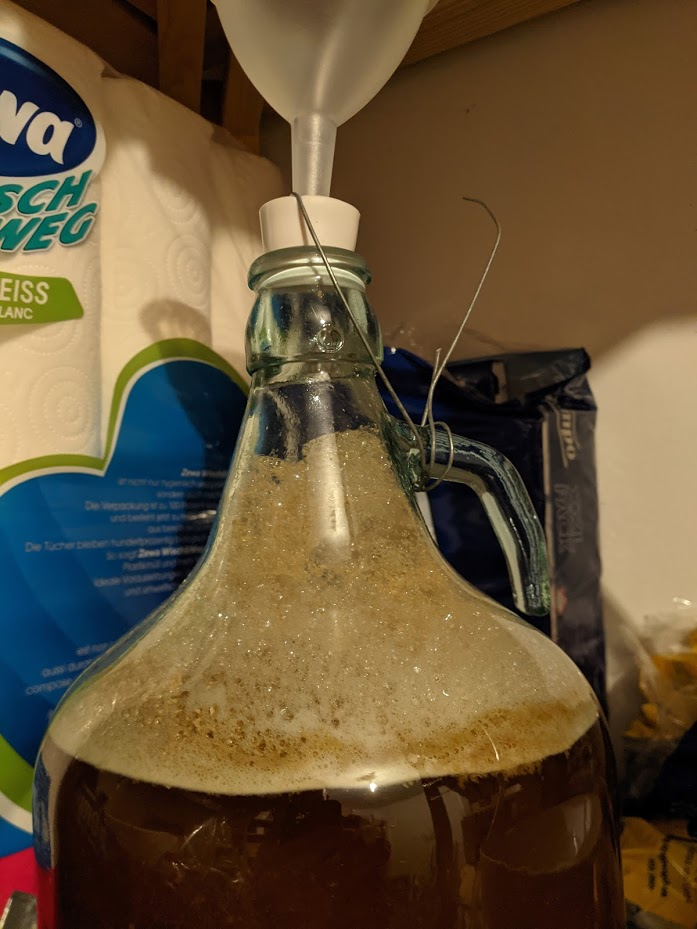landoa
WheatBeer
- Joined
- Jan 22, 2021
- Messages
- 47
- Reaction score
- 21
Hello,
I made this recipe: 1-Gallon Belgian Dubbel Recipe - BeerCraftr
Testing the gravity pre-boil has been meaningless for me in the first three batches (1.020, 1.020 and 1.012 this time!). The temperature of the wort was around 150F each time, so the gravity was no doubt a bit higher. However, I was very close to the target OG post-boil this time: 1.068. Thanks to suggestions on this forum, these things helped the most: mill grains twice, mash in 80% of water and dunk sparge in 20%, increase boil intensity.
I made a rookie mistake at the very end. I had to prepare lunch for the family at the same time and used an un-sanitized strainer when transferring the wort to the carboy. It was clean, so I will just see what happens.
There's quite a bit more trub than the last time. Its starting to settle now.
Now for my question. After aerating the wort, there are a bunch of bubbles on top. Is this already "Krausen" or the beginning of it? Can that layer of bubbles disappear and the krausen come back?
I made this recipe: 1-Gallon Belgian Dubbel Recipe - BeerCraftr
Testing the gravity pre-boil has been meaningless for me in the first three batches (1.020, 1.020 and 1.012 this time!). The temperature of the wort was around 150F each time, so the gravity was no doubt a bit higher. However, I was very close to the target OG post-boil this time: 1.068. Thanks to suggestions on this forum, these things helped the most: mill grains twice, mash in 80% of water and dunk sparge in 20%, increase boil intensity.
I made a rookie mistake at the very end. I had to prepare lunch for the family at the same time and used an un-sanitized strainer when transferring the wort to the carboy. It was clean, so I will just see what happens.
There's quite a bit more trub than the last time. Its starting to settle now.
Now for my question. After aerating the wort, there are a bunch of bubbles on top. Is this already "Krausen" or the beginning of it? Can that layer of bubbles disappear and the krausen come back?



